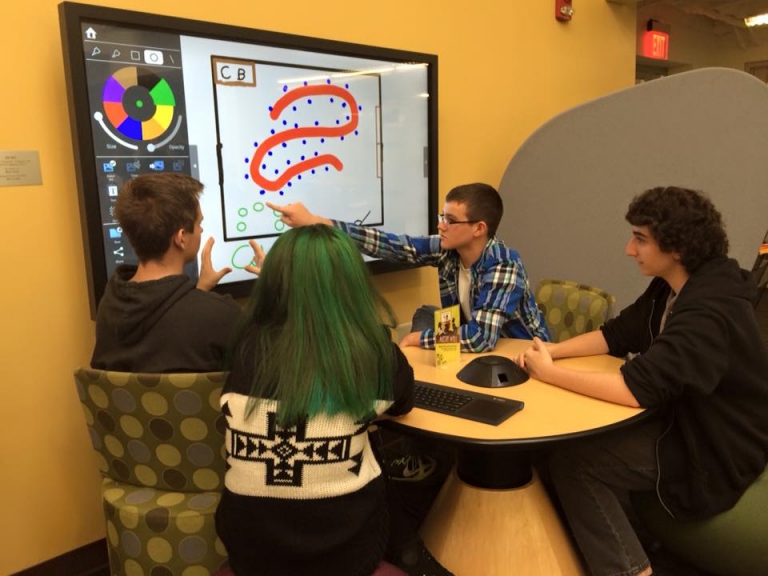Multimodal Communication
Technology today enables us to make a wide variety of decisions when we compose communication products allowing us to connect our message to the audience through text, visuals, audio, and touch. Even simple Word documents allow us to import pictures and graphs while providing us with hundreds of fonts, colors, and alignment possibilities. When we consider other projects such as ePortfolios, websites, speeches, visual presentation aids, flyers, research posters, and models, the possibilities may seem endless.
So how can you determine what mode or modes to utilize in your project? Oddly enough, an ancient philosopher provides us with a valuable framework. Aristotle recommends considering the Audience, Purpose, and Context of the situation in which the communication will take place.
- Audience: Determine your primary audience. For many projects, the first audience you'll want to consider is your instructor, but some projects reach beyond the instructor. You may want to engage the class as well, or a client might be interested in your work. Consider the age, cultural expectations, and gender of your audience. Make sure your communication product will engage them. For example, children may prefer a learning experience using games.
- Purpose: While your primary purpose may be to get a good grade, you should also consider the end result of the communication product. What do you want your audience to understand? How do you want them to feel? And most importantly, what do you want your audience to do when they engage with your communication product? Once you figure this out, choose modes that will be the most useful.
- Context: Consider what this audience will be doing when they read, hear, or see your communication product. For example. Does the class meet early? They may be tired. Think of ways to make your product work in that situation by using music or having your audience take part in some activity.
Once you've figured out the answers to these questions, Aristotle asked his pupils to consider the three main forms of rhetoric: ethos, pathos, and logos. Utilizing one or a combination of these forms can make a huge difference in the effectiveness of your communication product.
- Ethos refers to the credibility of the speaker or communication product. How credible will you appear to your audience? How will your audience be expecting you to dress? What expectations will they have about the design of your paper or ePortfolio? How will your spelling, word choice, and sentence structure affect your standing with your particular audience?
- Logos refers to the logic and arrangement of the communication product. Will your audience agree with your line of reasoning and be able to follow along? Understand where your audience stands on your topic and utilize sources and research that support your argument. (Citing those sources will help your ethos.) Structure your communication product in such a way that the goal and direction you are taking in the product is clear, understandable, and easy to follow.
- Pathos refers to the emotional aspects of your communication product. How do you want your audience to feel? Consider the color, shapes, and tone of your design products. Music, videos, and photographs can also provide a strong emotional connection with your audience. Also, consider humor if appropriate for your audience, purpose, and context.

